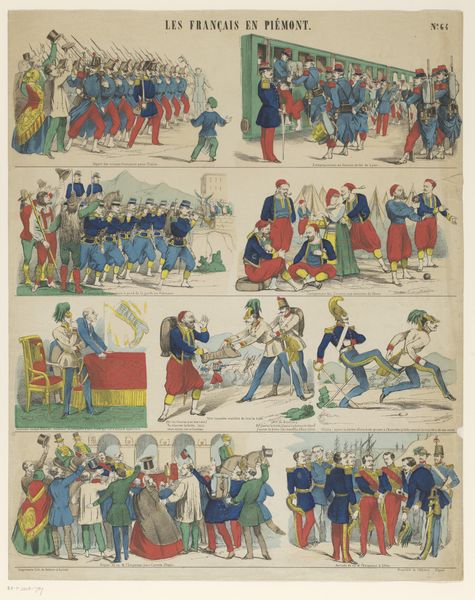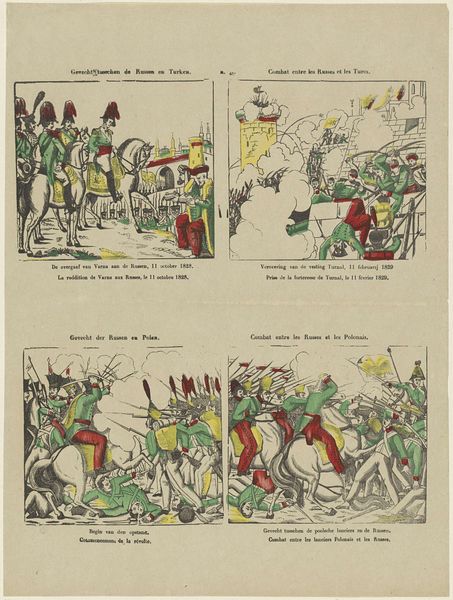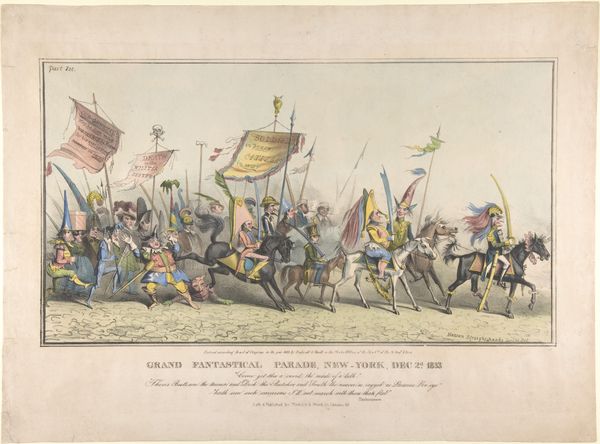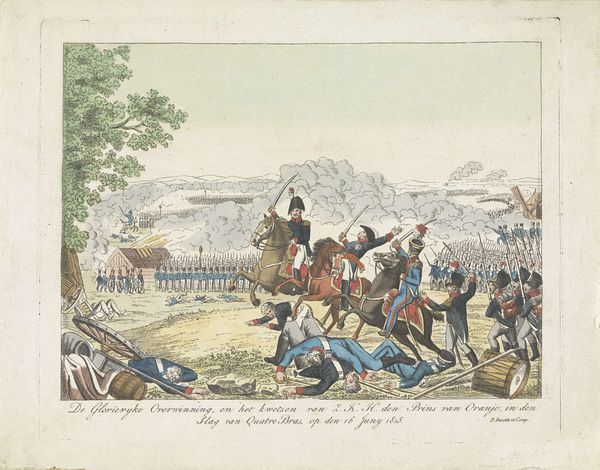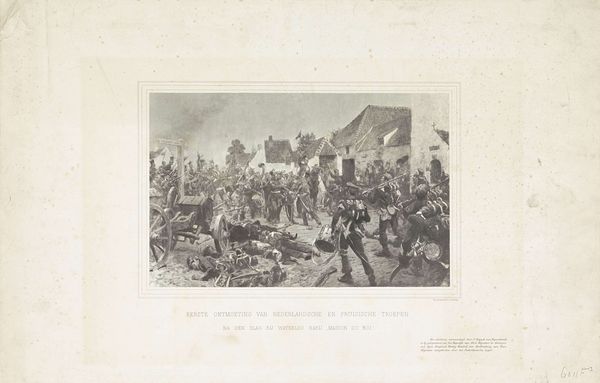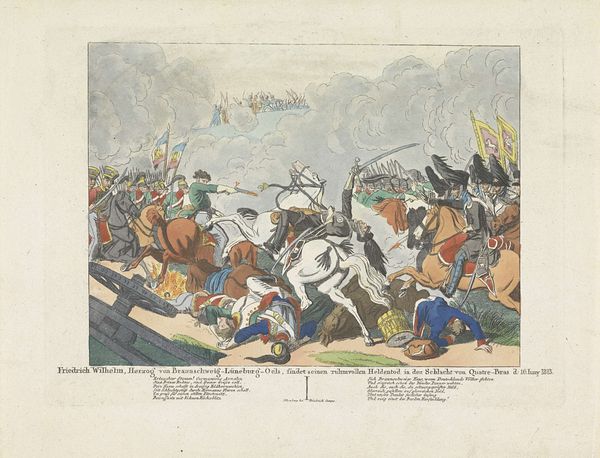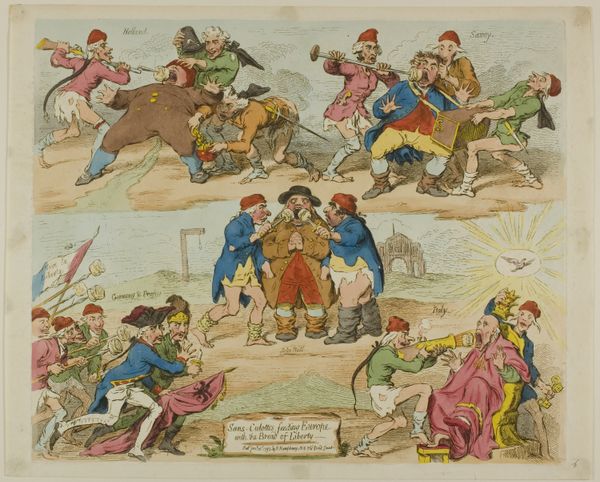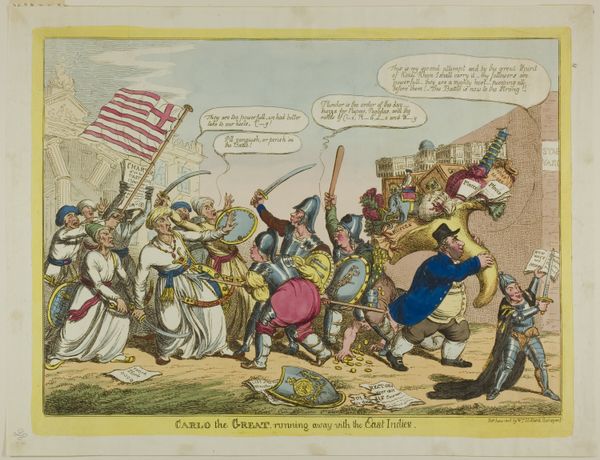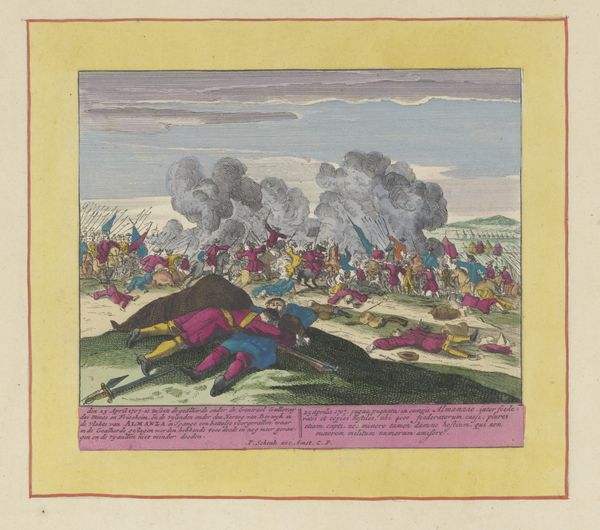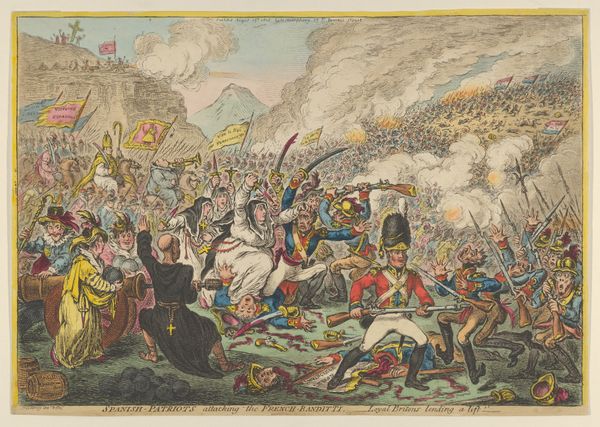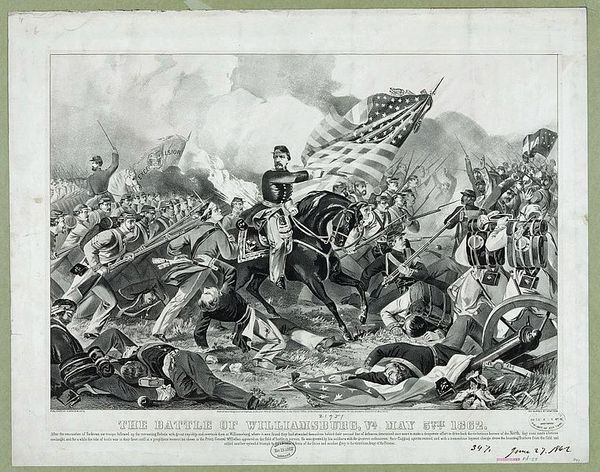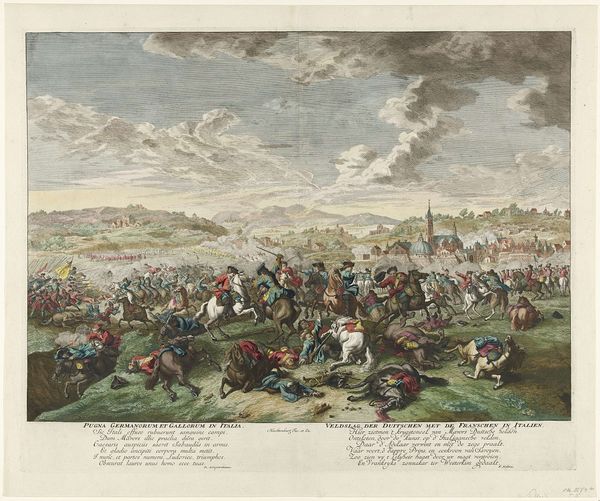
print, engraving
#
narrative-art
# print
#
war
#
figuration
#
history-painting
#
engraving
Dimensions: height 338 mm, width 425 mm
Copyright: Rijks Museum: Open Domain
Curator: This chromolithograph, entitled "Strijd van de Russen tegen de Turken bij Kars en Ezurum"—which translates roughly to "The Struggle of the Russians Against the Turks at Kars and Erzurum"—dates to sometime between 1840 and 1868, attributed to Gangel. Editor: What strikes me first is the absolute chaos! The composition, while detailed, lacks a central focus. It’s as though the artist aimed to capture every soldier and explosion in equal measure, flattening the image into a frenetic surface. The perspective is really fascinating—a dizzying experience, in some ways. Curator: Indeed. If we examine the individual figures, we see the repetitive use of certain gestures and poses. The formal elements—the red and blue uniforms, the puffball-shaped smoke—create a visual rhythm, even within the scene's disarray. The overall flatness of the print actually contributes to its intensity, I would argue. Editor: But beyond the form, the color scheme—that vibrant clash of reds and blues—tells a story of aggression and national pride, of two empires in conflict. I also notice the stylized balloons of smoke and cannon fire in pastel shades, that suggest to me an interesting symbolic, or ironic take, on war’s brutal reality. They almost soften the impact. Curator: The choice of chromolithography as a medium is noteworthy. The precise lines and distinct blocks of color emphasize the graphic nature of the image, allowing for mass production and dissemination, making it accessible to a broader public, shaping popular opinion on these distant military conflicts. Editor: Yes, images like this one helped build collective memories of the battles. Each nation projected their values, and mythologies onto such events, reinforcing cultural narratives and beliefs for future generations. The artwork, in turn, becomes an artifact laden with ideological freight. Curator: So, from a structural perspective, the controlled chaos creates a fascinating visual paradox. The work's texture is ultimately dictated by the density of incident, and each battle represented within this broader canvas feels similarly unresolved, incomplete. Editor: By diving into these shared visual narratives, we begin to perceive how historical narratives were strategically and symbolically shaped in collective consciousness. Quite profound, wouldn't you agree?
Comments
No comments
Be the first to comment and join the conversation on the ultimate creative platform.
